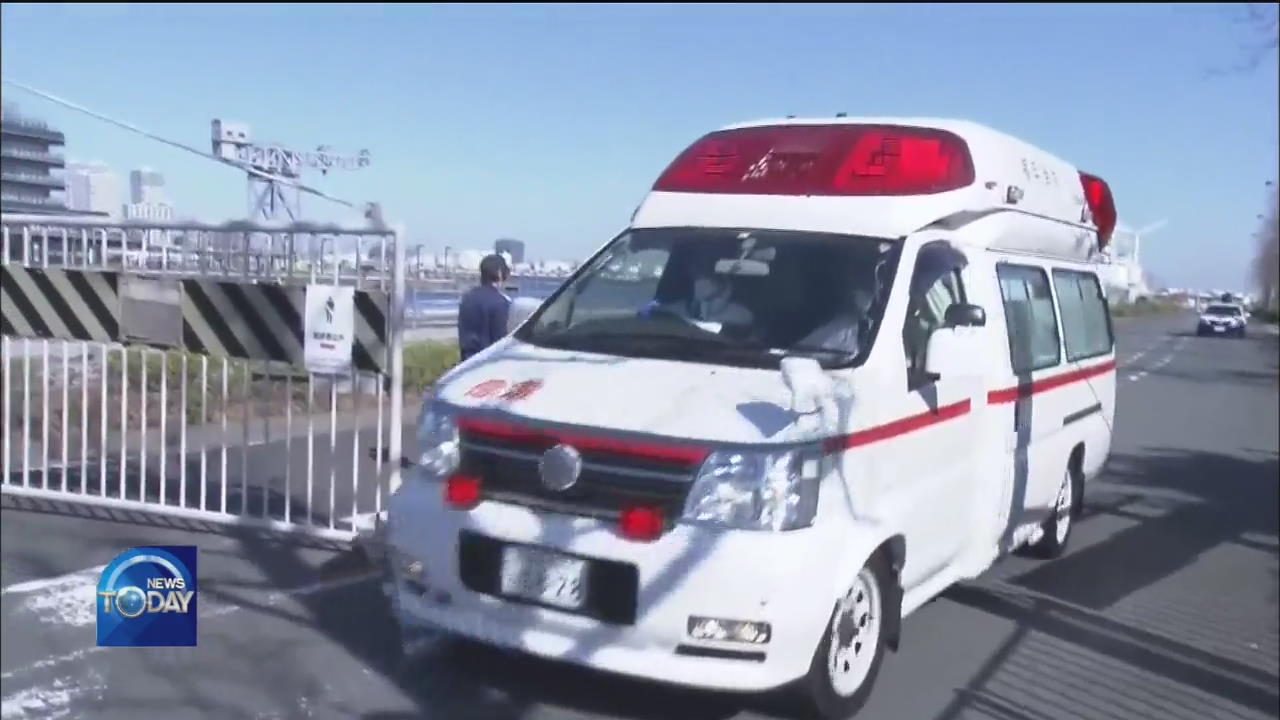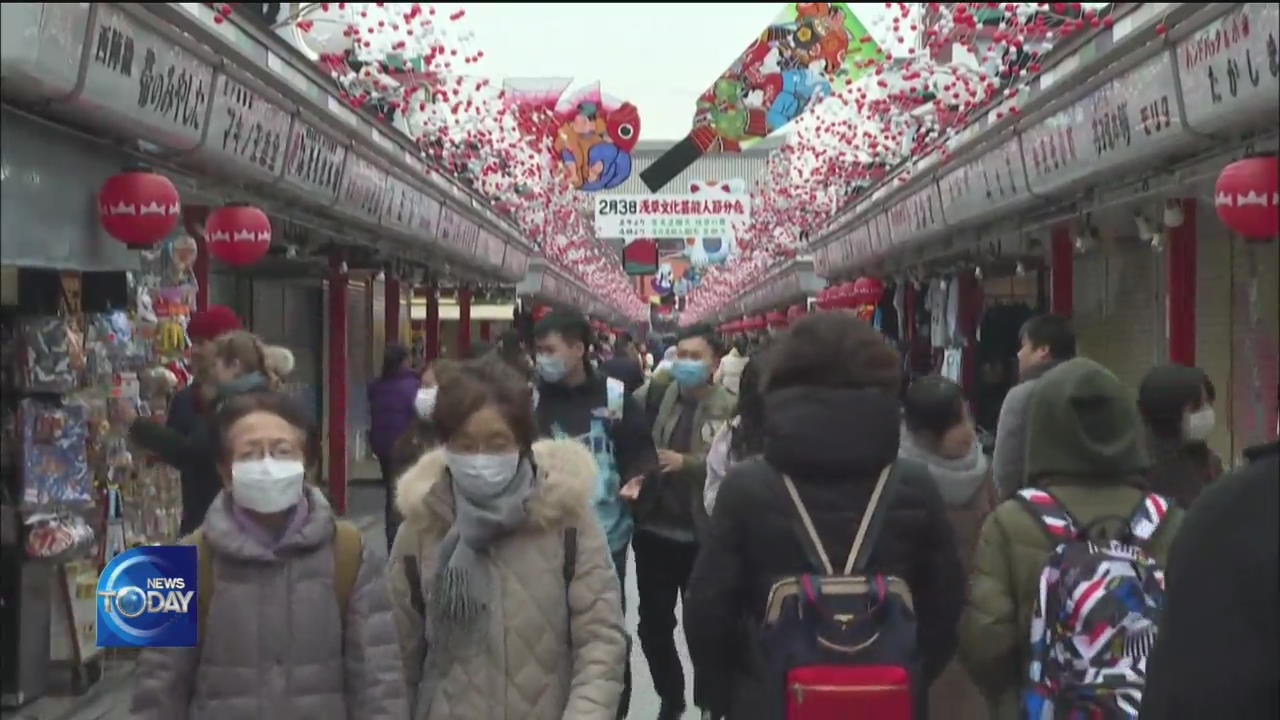MEDICAL TASK FORCE'S BRIEFING ON COVID-19
입력 2020.02.12 (15:10)
수정 2020.02.12 (16:45)
읽어주기 기능은 크롬기반의
브라우저에서만 사용하실 수 있습니다.
[Anchor Lead]
A South Korean medical task force currently treating coronavirus patients in the country, has given a briefing on the virus' travel route and a future direction in treatment. The experts said they can't definitively say the spread of the virus on a cruise ship in Japan is from airborne transmission. They also suggested the need to actively administer antiviral medication to people with chronic ailments and elderly patients, in particular.
[Pkg]
The number of coronavirus infections is rising on a giant cruise ship that is quarantined in Japan. Concerns are growing of a possible airborne transmission. But a central clinical task force in South Korea dealing with the outbreak says it's hard to tell if that's the case.
[Soundbite] BANG JI-HWAN(HEAD, CENTRAL CLINICAL TF) : “There has been debate over possible airborne transmission but this doesn't appear to be the case with the coronavirus at least for the most part. What matters is repeated exposure to a concentrated level of the virus.”
Respiratory contagious diseases can be divided into either airborne or droplet transmission. Contaminated saliva droplets are relatively heavy and their transmission to a distance more than 2 meters away from a patient rarely happens. Airborne transmission, on the other hand, spread pathogen-carrying viruses over greater distances.. Until now, just four diseases - measles, tuberculosis, smallpox and chickenpox - are believed to be transmitted through the air. For the case of corona, people should be more aware of transmission via contact. Indirect contact such as through objects smeared with a patient's droplets can spread the coronavirus to others. Authorities suspect the incident on the cruise ship in Japan may have been this type of transmission.
[Soundbite] JUNG EUN-KYEONG(CHIEF, CENTRAL QUARANTINE HQ) : “Infections can occur through public facilities and spaces contaminated with respiratory secretions. It's unlikely that those scenarios represent airborne transmission.”
Also, after treating multiple patients, the task force found that in some cases, young and healthy patients naturally grow out of the disease and recover. But on the other hand, elderly patients and those with existing chronic illnesses are at higher risk of seeing conditions worsen. Therefore new guidelines will be laid out, recommending antiviral treatment for these groups of people.
A South Korean medical task force currently treating coronavirus patients in the country, has given a briefing on the virus' travel route and a future direction in treatment. The experts said they can't definitively say the spread of the virus on a cruise ship in Japan is from airborne transmission. They also suggested the need to actively administer antiviral medication to people with chronic ailments and elderly patients, in particular.
[Pkg]
The number of coronavirus infections is rising on a giant cruise ship that is quarantined in Japan. Concerns are growing of a possible airborne transmission. But a central clinical task force in South Korea dealing with the outbreak says it's hard to tell if that's the case.
[Soundbite] BANG JI-HWAN(HEAD, CENTRAL CLINICAL TF) : “There has been debate over possible airborne transmission but this doesn't appear to be the case with the coronavirus at least for the most part. What matters is repeated exposure to a concentrated level of the virus.”
Respiratory contagious diseases can be divided into either airborne or droplet transmission. Contaminated saliva droplets are relatively heavy and their transmission to a distance more than 2 meters away from a patient rarely happens. Airborne transmission, on the other hand, spread pathogen-carrying viruses over greater distances.. Until now, just four diseases - measles, tuberculosis, smallpox and chickenpox - are believed to be transmitted through the air. For the case of corona, people should be more aware of transmission via contact. Indirect contact such as through objects smeared with a patient's droplets can spread the coronavirus to others. Authorities suspect the incident on the cruise ship in Japan may have been this type of transmission.
[Soundbite] JUNG EUN-KYEONG(CHIEF, CENTRAL QUARANTINE HQ) : “Infections can occur through public facilities and spaces contaminated with respiratory secretions. It's unlikely that those scenarios represent airborne transmission.”
Also, after treating multiple patients, the task force found that in some cases, young and healthy patients naturally grow out of the disease and recover. But on the other hand, elderly patients and those with existing chronic illnesses are at higher risk of seeing conditions worsen. Therefore new guidelines will be laid out, recommending antiviral treatment for these groups of people.
■ 제보하기
▷ 카카오톡 : 'KBS제보' 검색, 채널 추가
▷ 전화 : 02-781-1234, 4444
▷ 이메일 : kbs1234@kbs.co.kr
▷ 유튜브, 네이버, 카카오에서도 KBS뉴스를 구독해주세요!
- MEDICAL TASK FORCE'S BRIEFING ON COVID-19
-
- 입력 2020-02-12 15:12:16
- 수정2020-02-12 16:45:24

[Anchor Lead]
A South Korean medical task force currently treating coronavirus patients in the country, has given a briefing on the virus' travel route and a future direction in treatment. The experts said they can't definitively say the spread of the virus on a cruise ship in Japan is from airborne transmission. They also suggested the need to actively administer antiviral medication to people with chronic ailments and elderly patients, in particular.
[Pkg]
The number of coronavirus infections is rising on a giant cruise ship that is quarantined in Japan. Concerns are growing of a possible airborne transmission. But a central clinical task force in South Korea dealing with the outbreak says it's hard to tell if that's the case.
[Soundbite] BANG JI-HWAN(HEAD, CENTRAL CLINICAL TF) : “There has been debate over possible airborne transmission but this doesn't appear to be the case with the coronavirus at least for the most part. What matters is repeated exposure to a concentrated level of the virus.”
Respiratory contagious diseases can be divided into either airborne or droplet transmission. Contaminated saliva droplets are relatively heavy and their transmission to a distance more than 2 meters away from a patient rarely happens. Airborne transmission, on the other hand, spread pathogen-carrying viruses over greater distances.. Until now, just four diseases - measles, tuberculosis, smallpox and chickenpox - are believed to be transmitted through the air. For the case of corona, people should be more aware of transmission via contact. Indirect contact such as through objects smeared with a patient's droplets can spread the coronavirus to others. Authorities suspect the incident on the cruise ship in Japan may have been this type of transmission.
[Soundbite] JUNG EUN-KYEONG(CHIEF, CENTRAL QUARANTINE HQ) : “Infections can occur through public facilities and spaces contaminated with respiratory secretions. It's unlikely that those scenarios represent airborne transmission.”
Also, after treating multiple patients, the task force found that in some cases, young and healthy patients naturally grow out of the disease and recover. But on the other hand, elderly patients and those with existing chronic illnesses are at higher risk of seeing conditions worsen. Therefore new guidelines will be laid out, recommending antiviral treatment for these groups of people.
A South Korean medical task force currently treating coronavirus patients in the country, has given a briefing on the virus' travel route and a future direction in treatment. The experts said they can't definitively say the spread of the virus on a cruise ship in Japan is from airborne transmission. They also suggested the need to actively administer antiviral medication to people with chronic ailments and elderly patients, in particular.
[Pkg]
The number of coronavirus infections is rising on a giant cruise ship that is quarantined in Japan. Concerns are growing of a possible airborne transmission. But a central clinical task force in South Korea dealing with the outbreak says it's hard to tell if that's the case.
[Soundbite] BANG JI-HWAN(HEAD, CENTRAL CLINICAL TF) : “There has been debate over possible airborne transmission but this doesn't appear to be the case with the coronavirus at least for the most part. What matters is repeated exposure to a concentrated level of the virus.”
Respiratory contagious diseases can be divided into either airborne or droplet transmission. Contaminated saliva droplets are relatively heavy and their transmission to a distance more than 2 meters away from a patient rarely happens. Airborne transmission, on the other hand, spread pathogen-carrying viruses over greater distances.. Until now, just four diseases - measles, tuberculosis, smallpox and chickenpox - are believed to be transmitted through the air. For the case of corona, people should be more aware of transmission via contact. Indirect contact such as through objects smeared with a patient's droplets can spread the coronavirus to others. Authorities suspect the incident on the cruise ship in Japan may have been this type of transmission.
[Soundbite] JUNG EUN-KYEONG(CHIEF, CENTRAL QUARANTINE HQ) : “Infections can occur through public facilities and spaces contaminated with respiratory secretions. It's unlikely that those scenarios represent airborne transmission.”
Also, after treating multiple patients, the task force found that in some cases, young and healthy patients naturally grow out of the disease and recover. But on the other hand, elderly patients and those with existing chronic illnesses are at higher risk of seeing conditions worsen. Therefore new guidelines will be laid out, recommending antiviral treatment for these groups of people.
이 기사가 좋으셨다면
-
좋아요
0
-
응원해요
0
-
후속 원해요
0










![[HEADLINE]](https://news.kbs.co.kr/data/news/2020/02/12/4380136_10.jpg)






이 기사에 대한 의견을 남겨주세요.